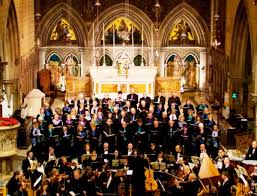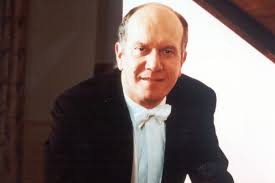St Clement’s Church, Hastings Old Town, 4 February 2017
There was an unexpectedly relaxed atmosphere at the baroque concert presented by Hastings Philharmonic last Saturday in St Clement’s church in Hastings Old Town. During the radiant performance of Monteverdi’s Beatus Vir, Marcio da Silva moved around between the horseshoe of singers and the small string ensemble, seemingly drawing the music out of them. It was visually captivating, and set a tone of intimacy and expectation which continued through the evening.
The works we heard covered the whole of the baroque period from Monteverdi in the early 17th century to CPE Bach’s Symphony No5 which dates from 1773.
The Monteverdi was full of colour, its rich textures being exploited by the well balanced choral forces. The progress the choir has made over recent years was exemplified in the change of tonal impact when they came to Bach’s Jesu Meine Freude BWV227. The rhythms here were kept light and fast moving, allowing the piece to flow naturally, even though the text is more weighty and dense. The male trio were particularly impressive before the well-argued final chorus and more formal chorale.
After a pause – which could just as well have been an interval! – the instrumental ensemble returned to play CPE Bach’s Symphony No5. Though there are many obvious connections with earlier works it is the hints of late Haydn and Beethoven in the reserved and often acerbic scoring which impress,and the edgy original instrument tonalities were particularly effective.
Handel’s Dixit Dominus brought us back to more familiar ground, with bright lines and rapid tempi. The chorus obviously enjoyed this despite the challenges, and the solo parts were finely integrated – with even Marcio providing a baritone line at one point.
In the final sections the conquassabit was hammered with splendid precision and the top sopranos were able to soar easily above the other singers.
A lovely evening – proving that Hastings Philharmonic are more than up to the challenge they have set themselves.
The next event this season is a Chamber Music Concert in Christ Church, St Leonards at 7.00pm on 18th March. Be there!


